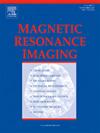基于mri的骨折(类似于限制回波间隔的CT的快速场回波)能否作为CT诊断颞下颌关节退行性疾病的替代方法?
IF 2
4区 医学
Q2 RADIOLOGY, NUCLEAR MEDICINE & MEDICAL IMAGING
引用次数: 0
摘要
目的:比较限制回波间隔(FRACTURE)磁共振成像(MRI)序列与计算机断层扫描(CT)序列类似于CT的快速场回波对颞下颌关节骨变化的评价及对退行性关节疾病(DJD)的诊断。方法:对14例患者的28个颞下颌关节进行MRI(包括骨折序列)和颞下颌关节区CT检查。分别制作骨折和CT的三轴横切面图像。两名放射科医生独立评估了九个类别的颞下颌关节骨变化。以CT作为参考标准,对每个观察者分别计算骨折与CT评估骨变化的一致性比例。还评估了检测DJD的诊断一致性,并使用kappa统计量测量了DJD诊断的观察者间一致性。结果:观察者1的骨折和CT评估骨变化的一致性比例为0.750 - 1.000,观察者2的一致性比例为0.786 - 1.000。对于ddd的诊断,骨折技术与CT评估的一致性很高,观察者1的一致性比例为1.000,观察者2的一致性比例为0.893。观察者间一致的kappa统计值对骨折患者的ddd诊断具有重要意义,对CT患者几乎完全一致。结论:骨折技术可为颞下颌关节骨变化的评估和DJD的诊断提供与CT相当的信息。在常规MRI序列中加入骨折序列(一种广泛使用的序列)可以使许多机构无需CT即可诊断椎间盘移位和DJD。本文章由计算机程序翻译,如有差异,请以英文原文为准。
Can MRI-based FRACTURE (fast field echo resembling a CT using restricted echo-spacing) serve as an alternative to CT for diagnosing degenerative joint disease of the temporomandibular joint?
Purpose
To compare the evaluation of temporomandibular joint bone changes and diagnosis of degenerative joint disease (DJD) using fast field echo resembling a CT using restricted echo-spacing (FRACTURE) magnetic resonance imaging (MRI) sequence, with that using computed tomography (CT).
Methods
This study included 28 temporomandibular joints from 14 patients who underwent MRI, including FRACTURE sequence, and CT of the temporomandibular joint region. Three-axis cross-sectional images were prepared for both FRACTURE and CT. Two radiologists independently assessed temporomandibular joint bone changes across nine categories. The proportion of agreement between FRACTURE and CT assessments for bone changes was calculated separately for each observer using CT as the reference standard. Diagnostic agreement for detecting DJD was also assessed, and interobserver agreement for DJD diagnosis was measured using kappa statistics.
Results
The proportion of agreement between FRACTURE and CT assessments for bone changes ranged from 0.750 to 1.000 for Observer 1, and from 0.786 to 1.000 for Observer 2. For DJD diagnosis, the FRACTURE technique demonstrated high agreement with CT assessments, with proportions of agreement of 1.000 for Observer 1 and 0.893 for Observer 2. The kappa statistic for interobserver agreement for DJD diagnosis was substantial with FRACTURE and almost perfect with CT.
Conclusion
The FRACTURE technique may provide information comparable to CT assessments for evaluating temporomandibular joint bone changes and diagnosing DJD. Adding FRACTURE, a widely available sequence, to conventional MRI sequences may enable many institutions to diagnose both disc displacement and DJD without requiring CT.
求助全文
通过发布文献求助,成功后即可免费获取论文全文。
去求助
来源期刊

Magnetic resonance imaging
医学-核医学
CiteScore
4.70
自引率
4.00%
发文量
194
审稿时长
83 days
期刊介绍:
Magnetic Resonance Imaging (MRI) is the first international multidisciplinary journal encompassing physical, life, and clinical science investigations as they relate to the development and use of magnetic resonance imaging. MRI is dedicated to both basic research, technological innovation and applications, providing a single forum for communication among radiologists, physicists, chemists, biochemists, biologists, engineers, internists, pathologists, physiologists, computer scientists, and mathematicians.
 求助内容:
求助内容: 应助结果提醒方式:
应助结果提醒方式:


